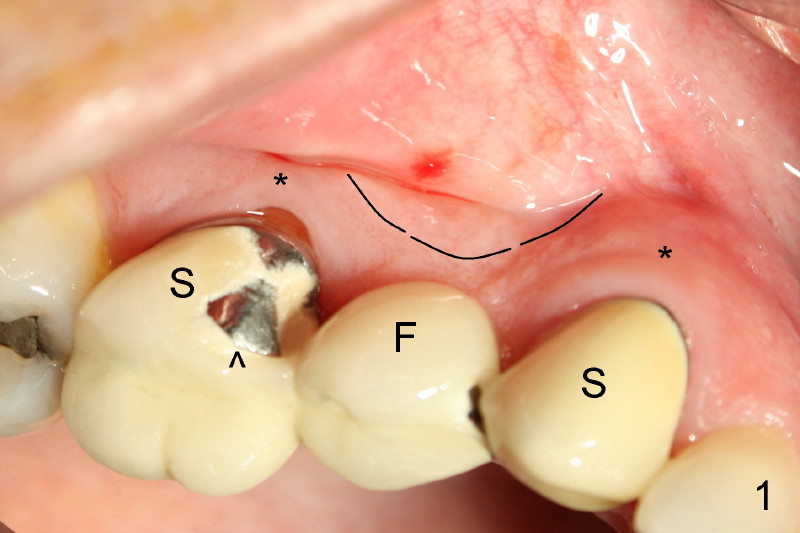
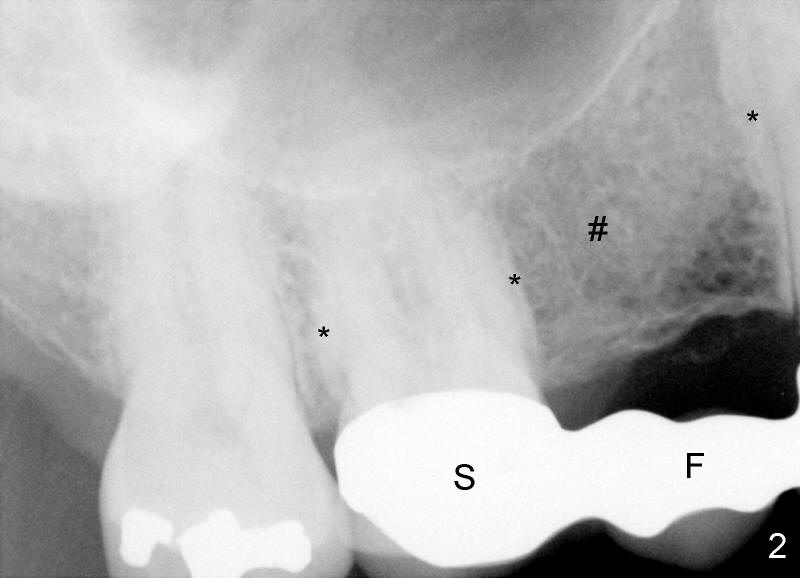
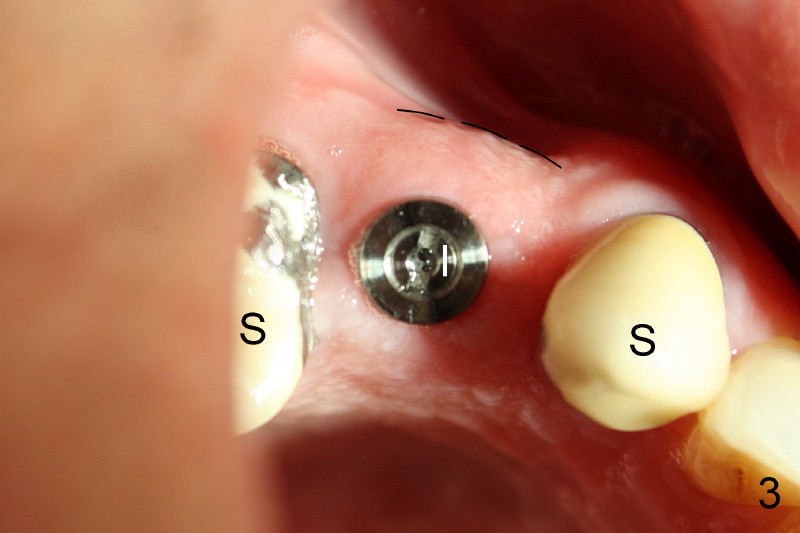
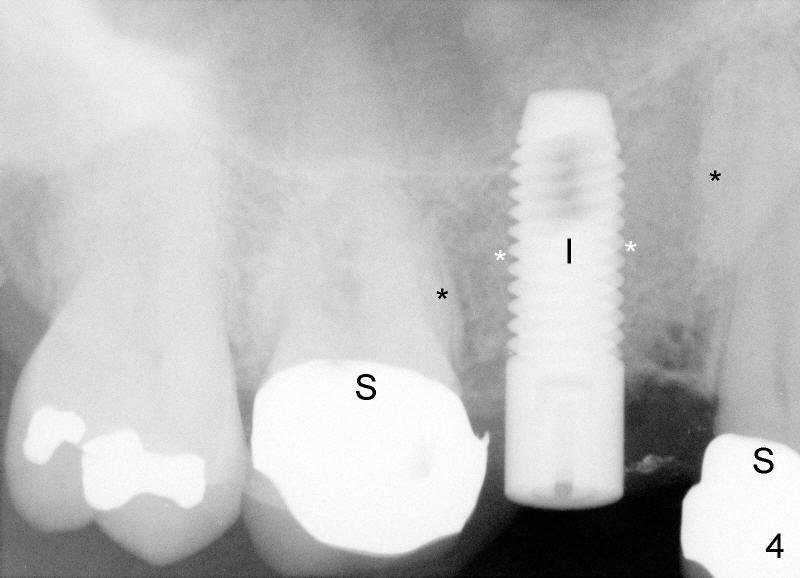
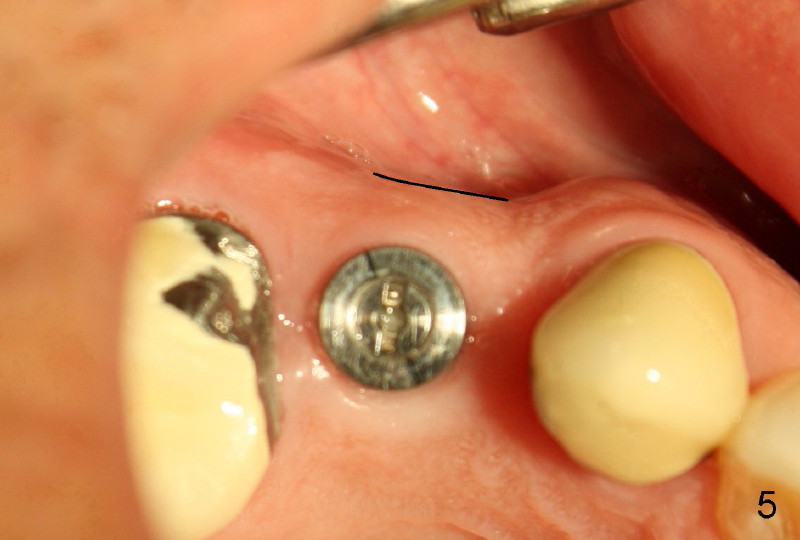
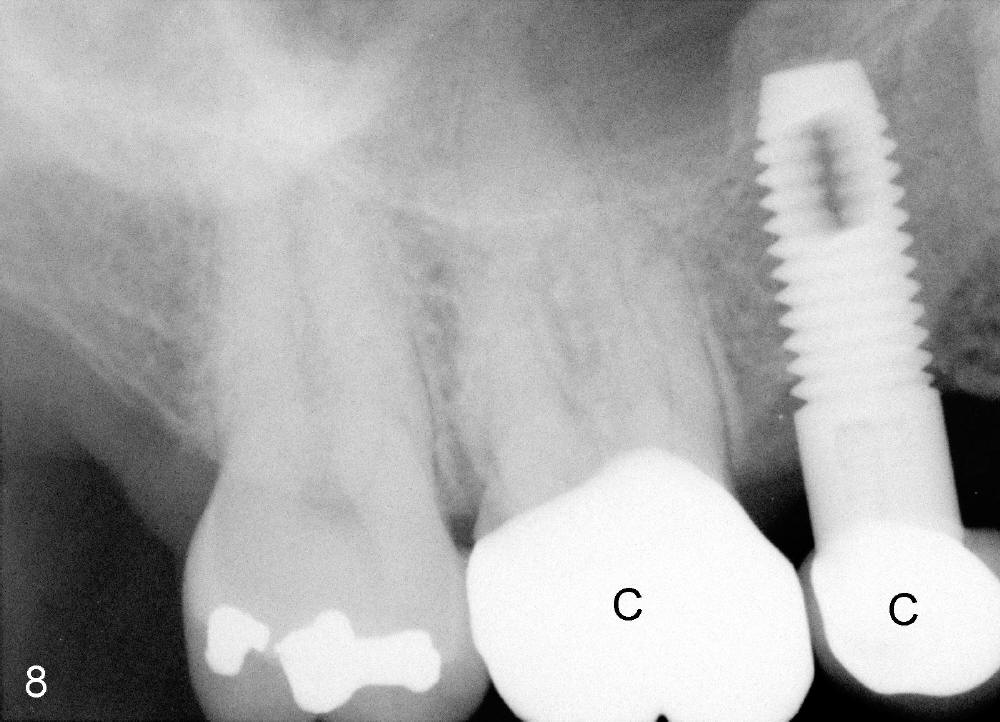
 |
 |
 |
 |
 |
|
 |
Implant is a Preventive Measure II
In last lecture, we talk about that implant is not just a treatment to restore a missing tooth. It is a preventive measure. It prevents bad things from happening due to a missing tooth.
Today, we continue this topic. James has had a bridge for over 20 years. This typical bridge has two supporting teeth (Fig.1: S) to support a fake (missing) tooth in the middle (F). Porcelain in one of the supporting teeth is chipped (arrowhead). Either a new bridge or an implant is needed. After discussion of these two options, James chooses the latter. To save more money, we plan to remove the middle part of the bridge (fake tooth), place an implant and make two crowns for the implant and the supporting tooth with chipped porcelain. If porcelain chips again, we most likely need to redo one crown.
If we choose to make a new bridge and porcelain chips again, the whole bridge is removed and three crowns are made . It is quite expensive. Every time crown is removed, our tooth is unavoidably ground out a little bit, closer to the nerve inside the tooth.
The biggest drawback of bridge is that several years after extraction, the root area of the fake tooth is depressed, like great canyon (Fig.1 dashed line), whereas the root areas of the supporting teeth look like small mountains (*). Chewing forces are transmitted to the roots of the supporting teeth to make bone around the roots strong and big. In contrast, the root area of the missing tooth has not received chewing stimulus. The bone keeps shrinking in volume.
X-ray in Fig.2 shows that bone density surrounding supporting tooth roots (black *) is much higher than that in the missing tooth area (#) (white vs. black).
We use a special technique, called bone expansion, to place an implant in the missing tooth area (Fig.3: I). The root area (dashed line) suddenly becomes bulky, as compared to Fig.1. Fig.3 is taken 3 weeks after implant placement. Surgical swelling should have subsided. Bone expansion makes a hole for the implant by pushing soft bone outward. Five months after implant surgery, the root surface remains pretty bulky (Fig.5 black line). Bone appears to heal around the implant (Fig.6).
Fig.4 shows that an implant is just placed (I). The bone density around it (white *) is lower than that around the supporting teeth (black *). Several years after a crown placed over the implant, the bone density should increase. We will keep you posted. See you then.
Fig.8 is taken when two new crowns are cemented (C).
Xin Wei, DDS, PhD, MS 1st edition 02/28/2012, last revision 09/27/2012